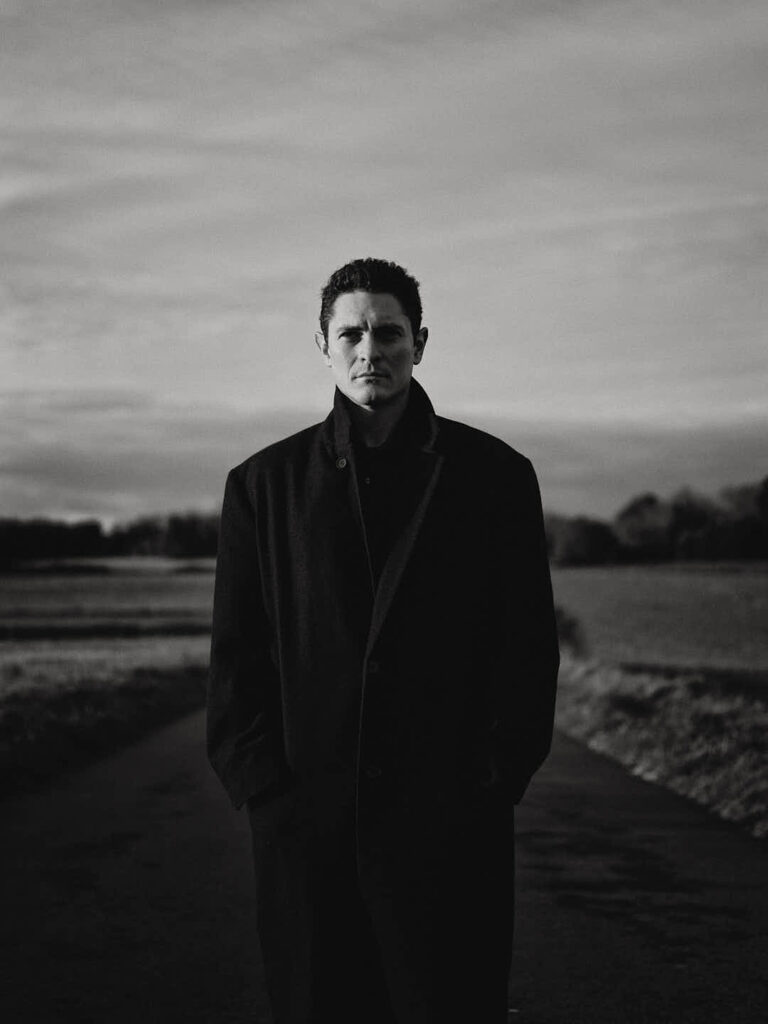
Richard Zinon: Peut Être
Written by Lauren Bulla
Edited by Lily-Rose Morris-Zumin
On February 13th, Richard Zinon opened his newest exhibition at Cadogan Gallery in Belgravia. The collection of works which draws heavily from inspiration he garnered from his recent move to Brittany, France, will be on display until March 29th. The collection of larger-than-life artworks are all consuming. Walking into the space, it was hard not to be awe-stricken by their sheer breadth, accompanied by a powerful emotional energy imbued throughout each brush stroke. The collection expertly underscores “themes of self-reflection, temporality, and the profound emotional depth of his creative process”.
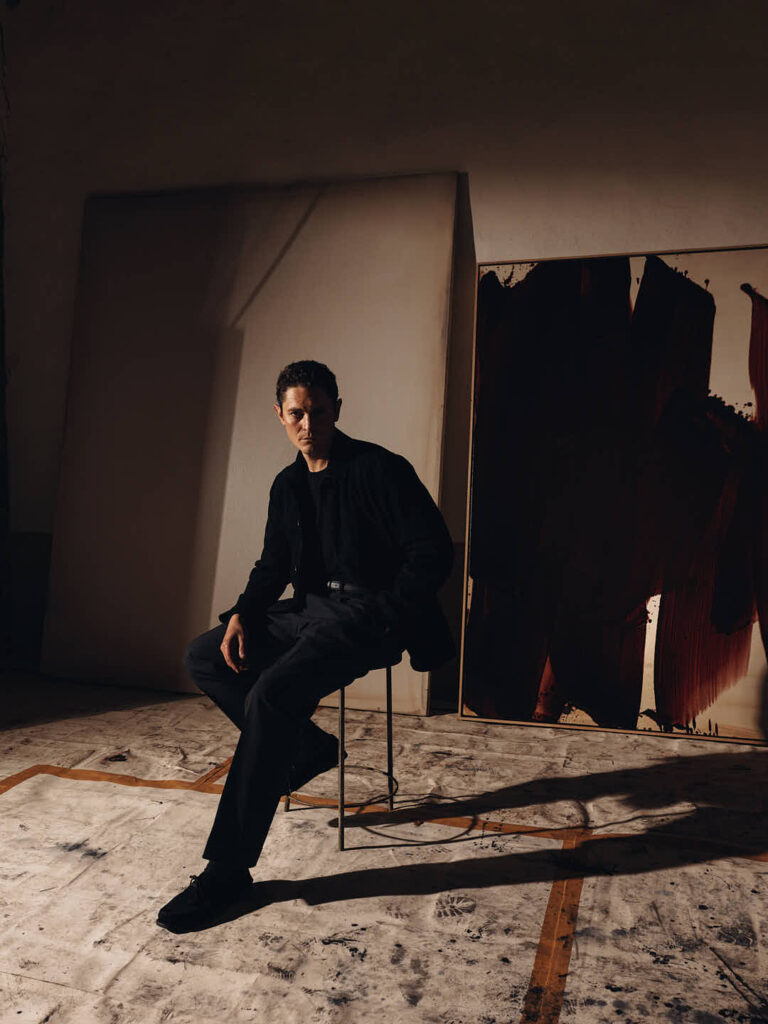
The works reflect Zinon’s surroundings, where he enjoys a “solitary yet rhythmic existence”, allowing him to focus on “immersing himself in an environment that mirrors his nature”. Dedicated to reflecting the impact of nature’s slow yet persistent rhythm, his studio sits atop a series of “windswept cliffs” inside a “centuries-old chapel”. Zinon’s practice is based on precision and intricately outlined steps, from curating his own wooden frames, to hand stretched canvas, the works reflect his razor-thin attention to detail.
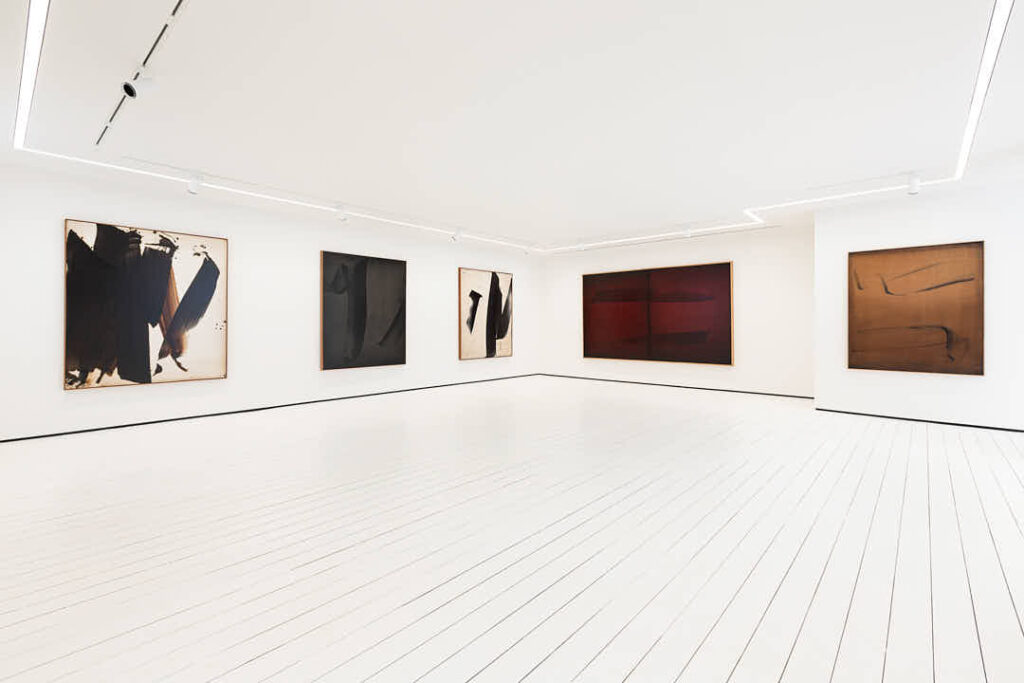
Each work presents you an affront, with wide stretching brushstrokes that compel you toward them, seeking a deeper understanding of where they came from, and where they may lead you next. The generally neutral palette of natural canvas, deep blacks, and chocolate browns, appear in juxtaposition to a vignetted red diptych based in the underbelly of the Cadogan gallery. Opening night was vibrant amongst the natural toned works, bustling conversation between buyers and press alike. I was in awe of the sheer speed with which one could witness the works selling off the walls and out of backstock, stored in the bottom of the gallery space, real time.
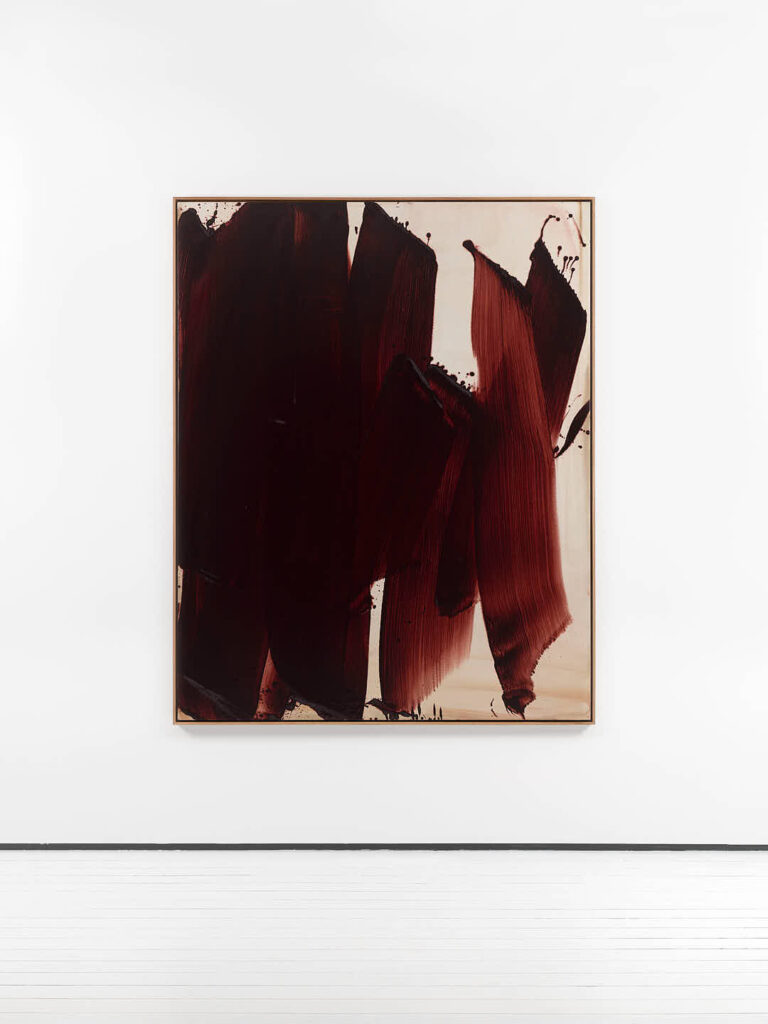
I had the pleasure of chatting with the artist in hopes of uncovering some of the deeply entrenched narratives, which can be witnessed within the works. There’s much more than meets the eye to his craft and artistic process, read below to discover therein.
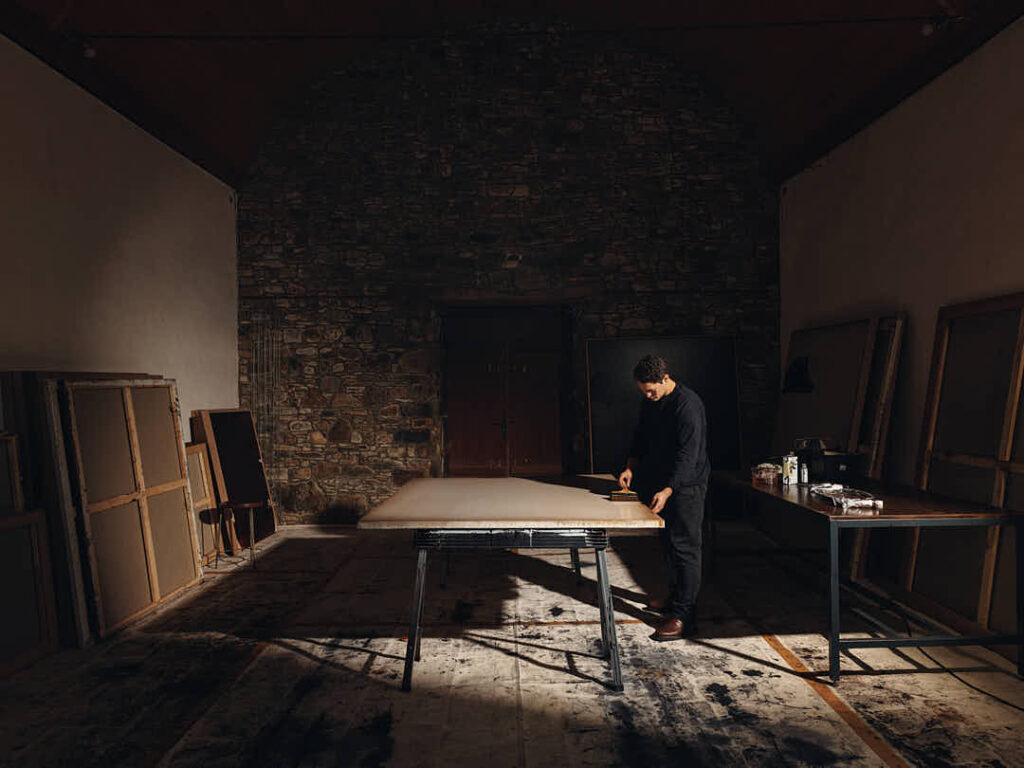
There is a moment when the slow burn momentum comes to a head and the final brush stroke is added. Can you expand on the emotional energy of this moment and how you feel when a piece has concluded?
The moment of conclusion in a painting is not a single, dramatic instant but rather a recognition—an arrival. It carries the weight of all the waiting, observing, and returning. There is a quiet intensity to it, a deep knowing that the piece has reached a state of undeniable purity. The Greeks speak of kairos, the opportune moment, and this applies here.
It is less about a final stroke and more about a realization: the work is complete not because nothing more could be added, but because nothing should be. Emotionally, this moment is layered. There is satisfaction, but also a sense of release, of letting go.

The painting transitions from being mine—something deeply personal and internal—to stepping into the external world, where it will exist independently. In my studio at Kerégal, surrounded by a specific light and atmosphere, a piece feels one way. But once it leaves that space and enters a gallery, the contrast is stark, almost unsettling. It is in this shift that I fully grasp its completion—not in the final brushstroke, but in the moment it no longer belongs solely to me.
Much discourse exists around the notion that one cannot want something and have it too… How does this idea manifest in your work?
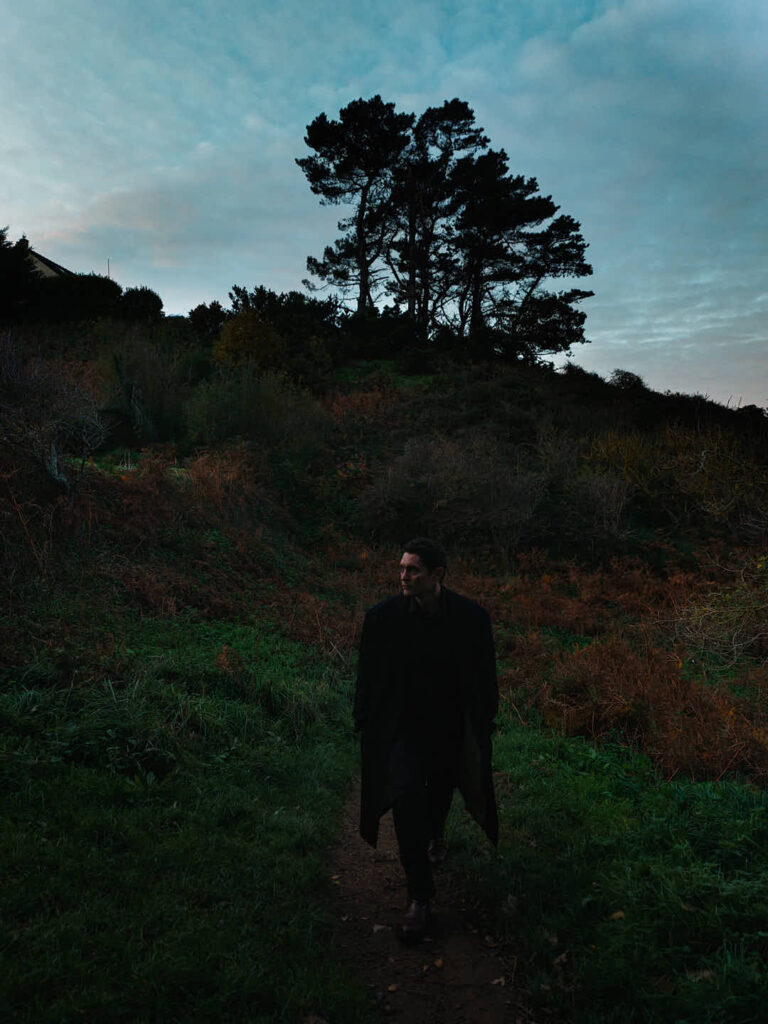
In my work, the idea that one cannot want something and have it too manifests in the delicate balance between control and surrender. I enter the creative process with intention—paying attention to composition, color, and balance—but true expression emerges only when I allow emotion to take over. There is a point where I must suspend my ideas, letting go of conscious pursuit to make space for something more instinctive, more truthful.
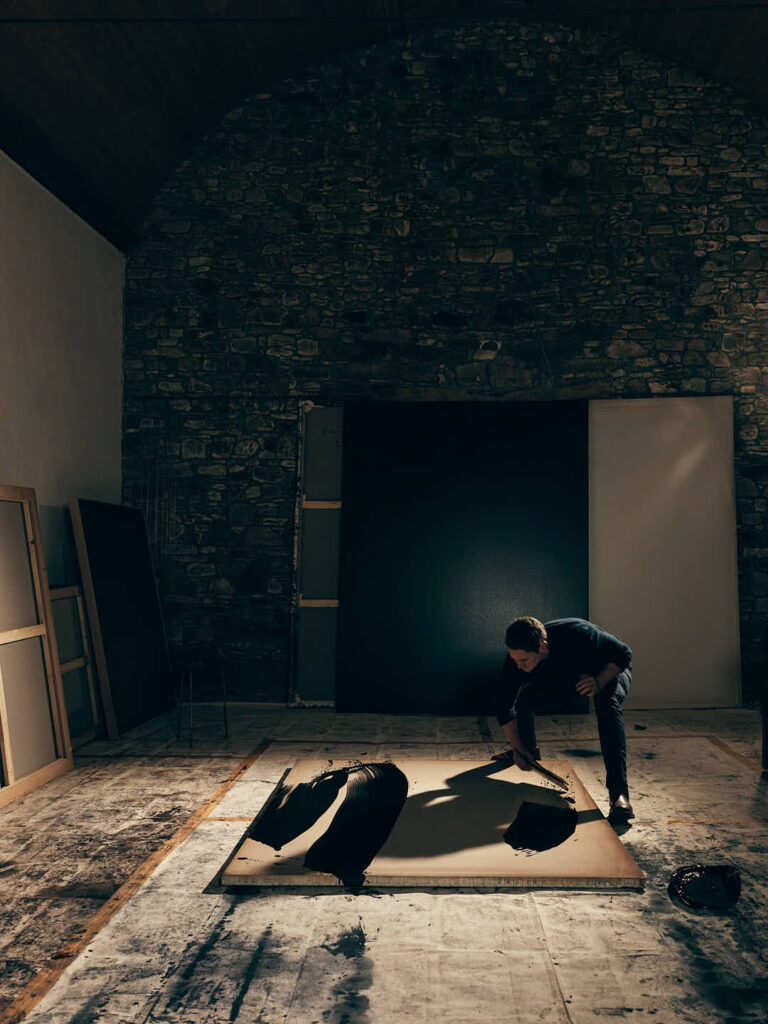
What are you chasing?
What I am chasing is not a fixed outcome but a moment of pure connection—the perfection of a stroke that aligns with the movement of the heart, body, and mind. It is a fleeting state, always shifting, never fully possessed. The more I seek to control it, the more elusive it becomes. Instead, I nurture my ideas, follow the rhythm of emotion, and wait for the moment when I must paint. In that moment, wanting dissolves into being, and the work finds its own inevitable form.
Red is a powerful element within this collection, can you give us a better understanding as to the process behind the two canvases, seemingly engulfed in this otherworldly red haze, almost vingetted by black gradients and spattered with high-energy brushstrokes?
Red, in this collection, is not just a color but a force—both consuming and generative. It carries an emotional intensity that cannot be ignored, evoking urgency, passion, and a sense of something vast yet intimate. The process behind these two canvases was one of immersion. I let red take over, allowing it to dictate the rhythm, the energy, and the tension within the composition. The black gradients act almost as a boundary, a contrast that pulls the red into focus, framing its expansiveness while also containing its intensity.
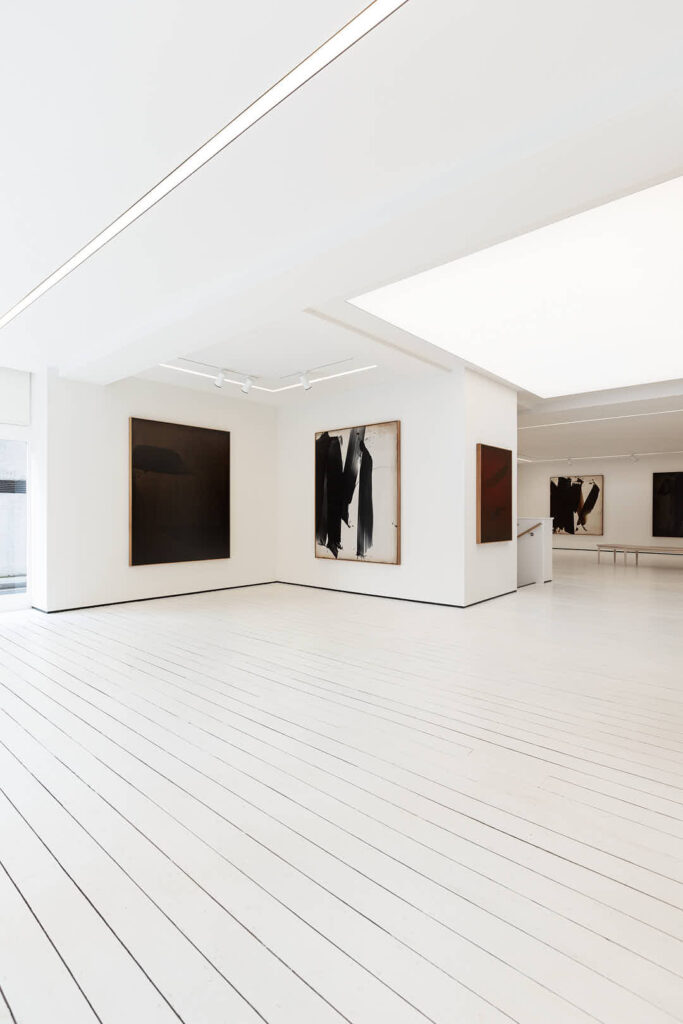
The high-energy brushstrokes are a response to that tension. They emerge from a state of
heightened emotion, a need to break through or push against the engulfing haze. There’s a physicality to the process—layers of pigment built up, wiped away, and reapplied until the surface carries the weight of movement and time. The final result feels otherworldly because it exists in that space between control and chaos, between form and dissolution. It’s not about depicting something tangible, but about capturing the sensation of being within that red—completely surrounded, consumed, and, in some way, transformed by it.
Can you expand on the thought process behind displaying these particular pieces in the underbelly of the Cadogan Gallery?
The decision to display these pieces in the underbelly of the Cadogan Gallery was very intentional.
That space—somewhat hidden, enclosed, and separate from the main exhibition areas—mirrors the immersive intensity of the works themselves. The red in these paintings is consuming, almost visceral, and I wanted the setting to amplify that sensation. In a more open, brightly lit space, the works might be observed with detachment. But here, in a lower, more intimate environment, the viewer is surrounded by them, drawn into their charged atmosphere. The underbelly of the gallery becomes an extension of the paintings—an echo of the tension, the depth, the feeling of being engulfed.
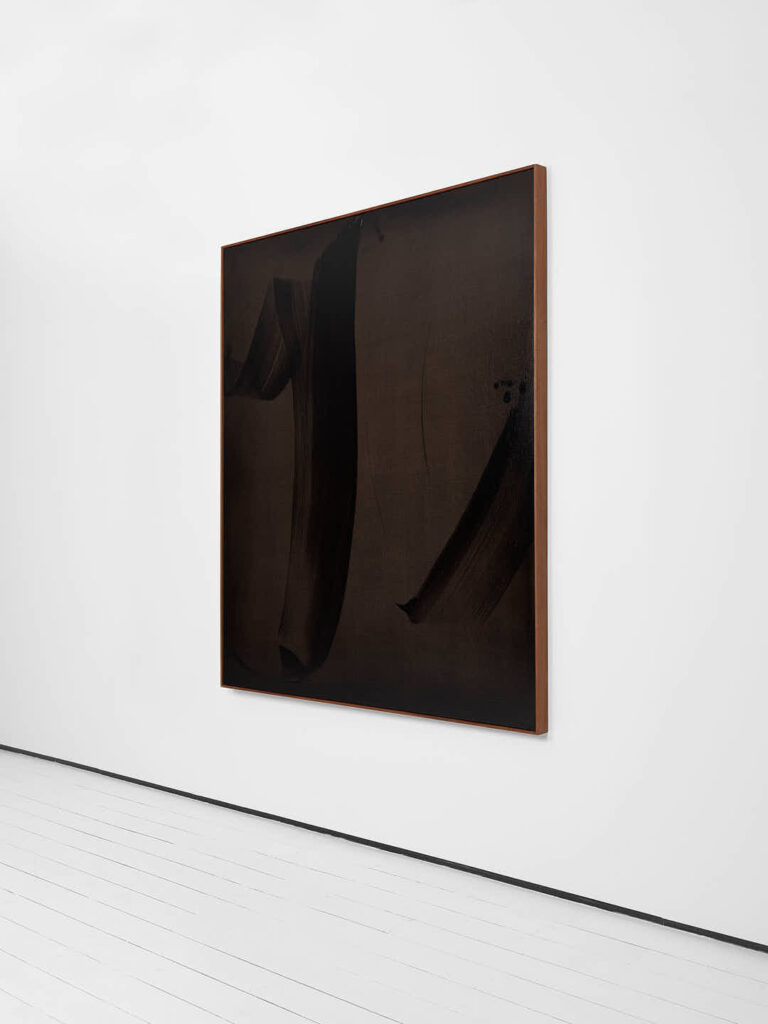
When you imagine someone gazing upon your work for the first time, what do you imagine is the ideal/ or most exciting response possible?
As for the ideal response, I don’t seek a singular reaction but rather a felt one. Whether it’s awe, discomfort, curiosity, or a quiet sense of recognition, what excites me is when someone inhabits the work rather than just looks at it. I imagine a viewer pausing—perhaps even holding their breath for a moment—before stepping closer, as if drawn in by something unspoken. The best response is not necessarily intellectual analysis but an instinctive pull, a moment where the painting becomes less of an object and more of an experience. That, to me, is when the work has truly connected.
In a world constantly seeking connection and yet often remains anything but, in the age of social media fame, and cellphone fixation at in person meet-ups, how do you feel technology informs or directly contests your work?
Technology, particularly the hyper-connectivity of social media, exists in direct contrast to the way I create. My process is slow, rooted in waiting, in physicality, in presence. Painting demands stillness, a kind of solitude that feels increasingly rare in a world of constant digital noise. In that sense, my work resists the immediacy of technology—it asks for time, for attention beyond a passing scroll or a quick double-tap.

And yet, technology also informs the way my work is encountered. A painting that is deeply textural, layered, and meant to be experienced in person is often reduced to a flat, glowing image on a screen. This shift fascinates me—the way a work can be stripped of its physicality and still carry meaning, or how it might be misinterpreted in the digital space. There’s an inherent distortion in that translation, a loss of intimacy.
But at the same time, technology offers a strange form of reach. A piece can travel across the world in an instant, be seen by thousands who may never step into a gallery. That tension—the push and pull between slowness and speed, between depth and surface—is something I’m always aware of. My work does not reject technology, but it does ask a question: In a world of fleeting digital connection, can we still make space for something that requires us to pause, to feel, to truly see?
If you could go back in time, after what you know now, what would you tell a much younger (and maybe less convicted by his practice) self?
I would tell my younger self to trust the waiting. To understand that doubt is not a weakness but a necessary part of the process. There is no shortcut to conviction—it comes through time, through repetition, through standing before the canvas again and again until something unspoken begins to Emerge. I would remind him that searching is not failure. That there will be moments when the work feels uncertain, when the weight of influence, expectation, or comparison threatens to pull him away from his own voice. But those moments are not signs to stop—they are signs to keep going, to lean in, to let the work guide him rather than force it into something it refuses to be.
Finally, I would tell him to embrace solitude, to guard the space where real creation happens. The external world will always be loud, full of distractions and noise. But the real work—the meaningful, undeniable work—happens in the quiet, in the tension between wanting and waiting.
Zinon compels his viewership to dig a little deeper, to take that extra deep breath, and see where the persistence may lead you. Instant gratification is as exhilarating as it is brief, it’s that slow dedication that ultimately breeds longstanding works which command our attention in this series and beyond.
